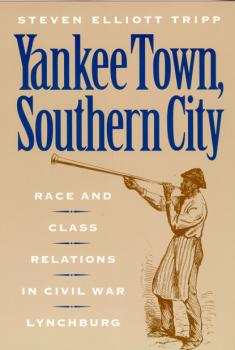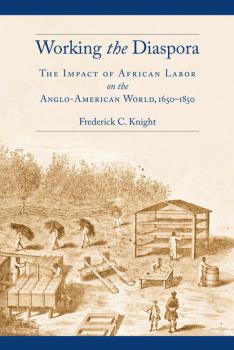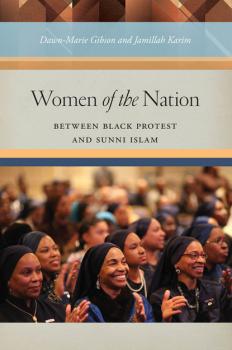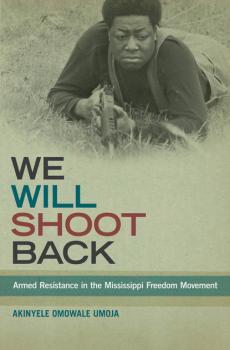ТОП просматриваемых книг сайта:
Историческая литература
Различные книги в жанре Историческая литература, доступные для чтения и скачиванияАннотация
In this, the third volume of an interdisciplinary history of the United States since the Civil War, Sean Dennis Cashman provides a comprehensive review of politics and economics from the tawdry affluence of the 1920s throught the searing tragedy of the Great Depression to the achievements of the New Deal in providing millions with relief, job opportunities, and hope before America was poised for its ascent to globalism on the eve of World War II. The book concludes with an account of the sliding path to war as Europe and Asia became prey to the ambitions of Hitler and military opportunists in Japan. The book also surveys the creative achievements of America's lost generation of artists, writers, and intellectuals; continuing innovations in transportation and communications wrought by automobiles and airplanes, radio and motion pictures; the experiences of black Americans, labor, and America's different classes and ethnic groups; and the tragicomedy of national prohibition. The cast of characters includes FDR, the New Dealers, Eleanor Roosevelt, George W. Norris, William E. Borah, Huey Long, Henry Ford, Clarence Darrow, Ernest Hemingway, Scott Fitzgerald, W.E.B. DuBois, A. Philip Randolph, Orson Welles, Wendell Willkie, and the stars of radio and the silver screen. The first book in this series, America in the Gilded Age , is now accounted a classic for historiographical synthesis and stylisic polish. America in the Age of the Titans , covering the Progressive Era and World War I, and America in the Twenties and Thirties reveal the author's unerring grasp of various primary and secondary sources and his emphasis upon structures, individuals, and anecdotes about them. The book is lavishly illustrated with various prints, photographs, and reproductions from the Library of Congress, the Museum of Modern Art, and the Whitney Museum of American Art.
Аннотация
One of the most hotly debated issues in the historical study of race relations is the question of how the Civil War and Reconstruction affected social relations in the South. Did the War leave class and race hierarchies intact? Or did it mark the profound disruption of a long-standing social order? Yankee Town, Southern City examines how the members of the southern community of Lynchburg, Virginia experienced four distinct but overlapping events–Secession, Civil War, Black Emancipation, and Reconstruction. By looking at life in the grog shop, at the military encampment, on the street corner, and on the shop floor, Steven Elliott Tripp illustrates the way in which ordinary people influenced the contours of race and class relations in their town.
Информация о книге
Автор произведения Steven Elliot Tripp
Аннотация
From the sixteenth to early-nineteenth century, four times more Africans than Europeans crossed the Atlantic Ocean to the Americas. While this forced migration stripped slaves of their liberty, it failed to destroy many of their cultural practices, which came with Africans to the New World. In Working the Diaspora, Frederick Knight examines work cultures on both sides of the Atlantic, from West and West Central Africa to British North America and the Caribbean.Knight demonstrates that the knowledge that Africans carried across the Atlantic shaped Anglo-American agricultural development and made particularly important contributions to cotton, indigo, tobacco, and staple food cultivation. The book also compellingly argues that the work experience of slaves shaped their views of the natural world. Broad in scope, clearly written, and at the center of current scholarly debates, Working the Diaspora challenges readers to alter their conceptual frameworks about Africans by looking at them as workers who, through the course of the Atlantic slave trade and plantation labor, shaped the development of the Americas in significant ways.
Аннотация
Presents oral histories and interviews of women who belong to Nation of Islam With vocal public figures such as Malcolm X, Elijah Muhammad, and Louis Farrakhan, the Nation of Islam often appears to be a male-centric religious movement, and over 60 years of scholarship have perpetuated that notion. Yet, women have been pivotal in the NOI's development, playing a major role in creating the public image that made it appealing and captivating. Women of the Nation draws on oral histories and interviews with approximately 100 women across several cities to provide an overview of women's historical contributions and their varied experiences of the NOI, including both its continuing community under Farrakhan and its offshoot into Sunni Islam under Imam W.D. Mohammed. The authors examine how women have interpreted and navigated the NOI's gender ideologies and practices, illuminating the experiences of African-American, Latina, and Native American women within the NOI and their changing roles within this patriarchal movement. The book argues that the Nation of Islam experience for women has been characterized by an expression of Islam sensitive to American cultural messages about race and gender, but also by gender and race ideals in the Islamic tradition. It offers the first exhaustive study of women’s experiences in both the NOI and the W.D. Mohammed community.
Аннотация
What the Rabbis Said examines a relatively unexplored facet of the rich social history of nineteenth-century American Jews. Based on sources that have heretofore been largely neglected, it traces the sermons and other public statements of rabbis, both Traditionalists and Reformers, on a host of matters that engaged the Jewish community before 1900.Reminding the reader of the complexities and diversity that characterized the religious congregations in nineteenth-century America, Cohen offers insight into the primary concerns of both the religious leaders and the laity—full acculturation to American society, modernization of the Jewish religious tradition, and insistence on the recognized equality of a non-Christian minority. She also discusses the evolution of denominationalism with the split between Traditionalism and Reform, the threat of antisemitism, the origins of American Zionism, and interreligious dialogue. The book concludes with a chapter on the professionalization of the rabbinate and the legacy bequeathed to the next century. On all those key issues rabbis spoke out individually or in debates with other rabbis. From the evidence presented, the congregational rabbi emerges as a pioneer, the leader of a congregation, as well as spokesman for the Jews in the larger society, forging an independence from his European counterparts, and laboring for the preservation of the Jewish faith and heritage in an unfamiliar environment.
Аннотация
Winner of the 2014 Anna Julia Cooper-CLR James Book Award presented by the National Council of Black Studies Winner of the 2014 PEN Oakland-Josephine Miles Award for Excellence in Literature In We Will Shoot Back: Armed Resistance in the Mississippi Freedom Movement , Akinyele Omowale Umoja argues that armed resistance was critical to the Southern freedom struggle and the dismantling of segregation and Black disenfranchisement. Intimidation and fear were central to the system of oppression in most of the Deep South. To overcome the system of segregation, Black people had to overcome fear to present a significant challenge to White domination. As the civil rights movement developed, armed self-defense and resistance became a significant means by which the descendants of enslaved Africans overturned fear and intimidation and developed different political and social relationships between Black and White Mississippians.This riveting historical narrative reconstructs the armed resistance of Black activists, their challenge of racist terrorism, and their fight for human rights.
We Remember with Reverence and Love - Hasia R. Diner
Goldstein-Goren Series in American Jewish HistoryАннотация
Winner of the 2009 National Jewish Book Award in American Jewish Studies Recipient of the 2010 Guggenheim Fellowship in Humanities-Intellectual & Cultural History It has become an accepted truth: after World War II, American Jews chose to be silent about the mass murder of millions of their European brothers and sisters at the hands of the Nazis. In this compelling work, Hasia R. Diner shows the assumption of silence to be categorically false. Uncovering a rich and incredibly varied trove of remembrances—in song, literature, liturgy, public display, political activism, and hundreds of other forms— We Remember with Reverence and Love shows that publicly memorializing those who died in the Holocaust arose from a deep and powerful element of Jewish life in postwar America. Not only does she marshal enough evidence to dismantle the idea of American Jewish “forgetfulness,” she brings to life the moving and manifold ways that this widely diverse group paid tribute to the tragedy.Diner also offers a compelling new perspective on the 1960s and its potent legacy, by revealing how our typical understanding of the postwar years emerged from the cauldron of cultural divisions and campus battles a generation later. The student activists and “new Jews” of the 1960s who, in rebelling against the American Jewish world they had grown up in “a world of remarkable affluence and broadening cultural possibilities” created a flawed portrait of what their parents had, or rather, had not, done in the postwar years. This distorted legacy has been transformed by two generations of scholars, writers, rabbis, and Jewish community leaders into a taken-for-granted truth.
Информация о книге
Автор произведения Hasia R. Diner
Аннотация
The story of the black freedom struggle in America has been overwhelmingly male-centric, starring leaders like Martin Luther King, Jr., Malcolm X, and Huey Newton. With few exceptions, black women have been perceived as supporting actresses; as behind-the-scenes or peripheral activists, or rank and file party members. But what about Vicki Garvin, a Brooklyn-born activist who became a leader of the National Negro Labor Council and guide to Malcolm X on his travels through Africa? What about Shirley Chisholm, the first black Congresswoman?From Rosa Parks and Esther Cooper Jackson, to Shirley Graham DuBois and Assata Shakur, a host of women demonstrated a lifelong commitment to radical change, embracing multiple roles to sustain the movement, founding numerous groups and mentoring younger activists. Helping to create the groundwork and continuity for the movement by operating as local organizers, international mobilizers, and charismatic leaders, the stories of the women profiled in Want to Start a Revolution? help shatter the pervasive and imbalanced image of women on the sidelines of the black freedom struggle. Contributors: Margo Natalie Crawford, Prudence Cumberbatch, Johanna Fernández, Diane C. Fujino, Dayo F. Gore, Joshua Guild, Gerald Horne, Ericka Huggins, Angela D. LeBlanc-Ernest, Joy James, Erik McDuffie, Premilla Nadasen, Sherie M. Randolph, James Smethurst, Margaret Stevens, and Jeanne Theoharis.
Аннотация
Voices of Emancipation seeks to recover the lives and words of former slaves in vivid detail, mining the case files of the U.S. Pension Bureau, which administered a huge pension system for Union veterans and their survivors in the decades following the Civil War. The files contain an invaluable, first-hand perspective of slavery, emancipation, black military service, and freedom. Moreover, as Pension Bureau examiners began interviewing black Union veterans and their families shortly after the Civil War, the files are arguably among the earliest sources of ex-slaves reflecting on their lives, occurring decades before better-known WPA Slave Narratives of the 1930s took place. Voices of Emancipation explores the words of former slaves topically, beginning with recollections of slavery, moving on to experiences of military service in the Civil War, the transition to freedom, and finally to reflections on marriage and family before and after emancipation. With an introduction that places the pension files in context and presents the themes of the book, and historical commentary interwoven throughout the excerpts of the interviews themselves, Elizabeth A. Regosin and Donald R. Shaffer effectively introduce the files and the treasures they contain to students and general readers, but also provide specialists with an indispensable research tool.
Аннотация
Victory Girls, Khaki-Wackies, and Patriotutes offers a counter-narrative to the story of Rosie the Riveter, the icon of female patriotism during World War II. With her fist defiantly raised and her shirtsleeves rolled up, Rosie was an asexual warrior on the homefront. But thousands of women supported the war effort not by working in heavy war industries, but by providing morale-boosting services to soldiers, ranging from dances at officers’ clubs to more blatant forms of sexual services, such as prostitution.While the de-sexualized Rosie was celebrated, women who used their sexuality—either intentionally or inadvertently—to serve their country encountered a contradictory morals campaign launched by government and social agencies, which shunned female sexuality while valorizing masculine sexuality. This double-standard was accurately summed up by a government official who dubbed these women“patriotutes”: part patriot, part prostitute.Marilyn E. Hegarty explores the dual discourse on female sexual mobilization that emerged during the war, in which agencies of the state both required and feared women’s support for, and participation in, wartime services. The equation of female desire with deviance simultaneously over-sexualized and desexualized many women, who nonetheless made choices that not only challenged gender ideology but defended their right to remain in public spaces.










